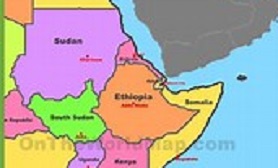Boasting an abundance of renewable resources, East Africa has garnered substantial attention from major international players within its clean energy market.
Robust policies and declining costs of technology in the sector, coupled with regional market and infrastructure reforms, are poised to accelerate the deployment of clean energy projects. Yet the region is also anticipating first oil from the Tilenga project – part of Uganda’s Lake Albert Development – along with new liquefied natural gas (LNG) investments in Tanzania.
New avenues for multi-pronged resource development strategies will be explored during the 2024 Invest in African Energy (IEA) forum – taking place in Paris next May and uniting industry experts from across Europe and Africa for two days of country spotlights, networking sessions and deal-making opportunities.
South Sudan
With a low electrification rate, South Sudan is a prime candidate for accelerated investment in decentralized energy solutions to increase rural energy access and stimulate industrial development. The country features opportunities for regional and international partners to support the development of solar mini-grids, an achievable and scalable energy solution for South Sudan’s rapidly growing population, which remains heavily reliant on diesel-powered generators for electricity.
As one of Africa’s largest oil producers, the country is also seeking an influx of capital and technology to expand its upstream sector. Last September, South Sudan finalized a three-billion-dollar deal with U.S. oil company, Caltech Investment, to invest in and grow its petroleum industry and associated infrastructure. South Sudan is also looking to forge partnerships in technical training, skill building and knowledge transfer as it aims to develop its local workforce and transform its national oil company, Nilepet, into an integrated energy operator by 2027.
Tanzania
Having set a goal to increase its share of renewable energy to 50% by 2025, Tanzania has implemented a series of programs to support the development of solar, geothermal and hydropower projects, aiming to add 600 MW of hydropower and 400 MW of geothermal power capacity to the grid by 2025.
The Africa Renewable Energy Fund, a private equity fund focused on the development of clean energy projects across sub-Saharan Africa, has invested in multiple renewable projects in the country, including a 10 MW solar plant in Singida. Last April, the Tanzanian Government, African Development Bank and French Development Agency signed finance agreements worth $300 million for the construction of an 87.8 MW hydropower plant in the Kagera region, with the project also receiving a $38.8-million grant from the EU.
Meanwhile, Tanzania is also driving energy development in the form of natural gas. The country holds proven natural gas reserves of 57 trillion cubic feet and is hoping to accelerate exploration, with plans to launch an oil and gas licensing round in 2024. Last May, Equinor, Shell and ExxonMobil finalized discussions with the Tanzanian Government on the construction of a large-scale LNG facility with the capacity to supply 10 million metric tons per year, establishing an initial production-sharing agreement and regulatory framework. One month later, China National Offshore Oil Corporation announced its plans to explore for oil and gas in Tanzania’s 4/1B and 4/1C offshore blocks, located nearby existing gas discoveries.
Uganda
Earlier this month, Uganda’s Ministry of Energy and Mineral Development released its Energy Transition Plan that focuses on raising energy access rates and requires eight billion in annual clean energy investments by the end of the decade. The country’s renewable sector has attracted steady investment to date – during this year’s COP28 summit, for example, the Private Infrastructure Development Group committed $19 million towards the construction of a 20 MW solar PV project in northwestern Uganda.
Notably, the East African country is spearheading a dual development strategy, awaiting first oil production from the Lake Albert Development set to begin in 2025. As a result, Uganda requires significant foreign investment to build the infrastructure needed to monetize its estimated 6.5 billion barrels of oil reserves.

